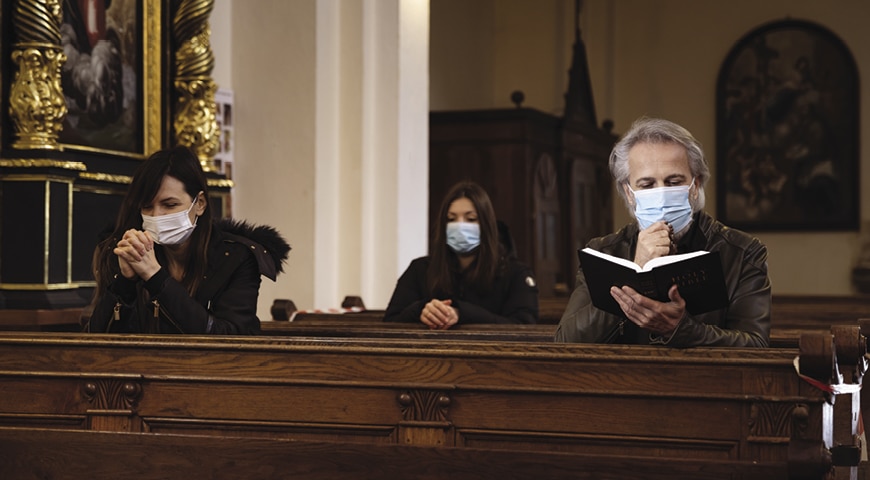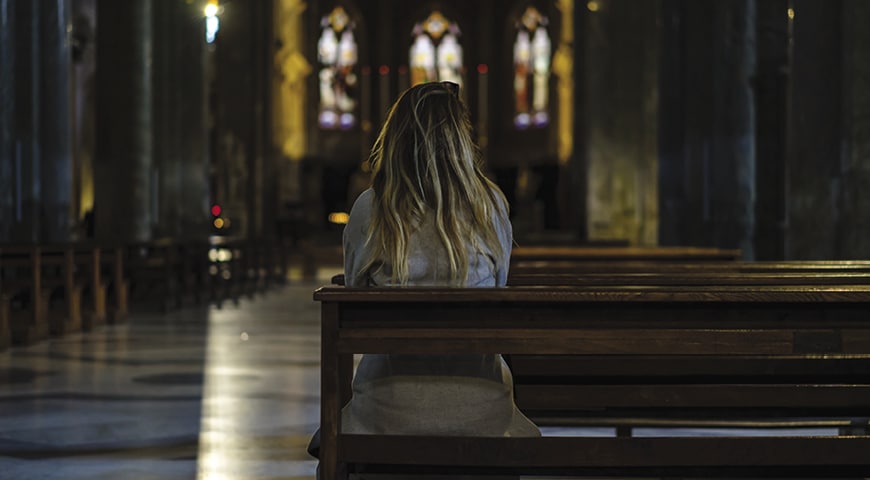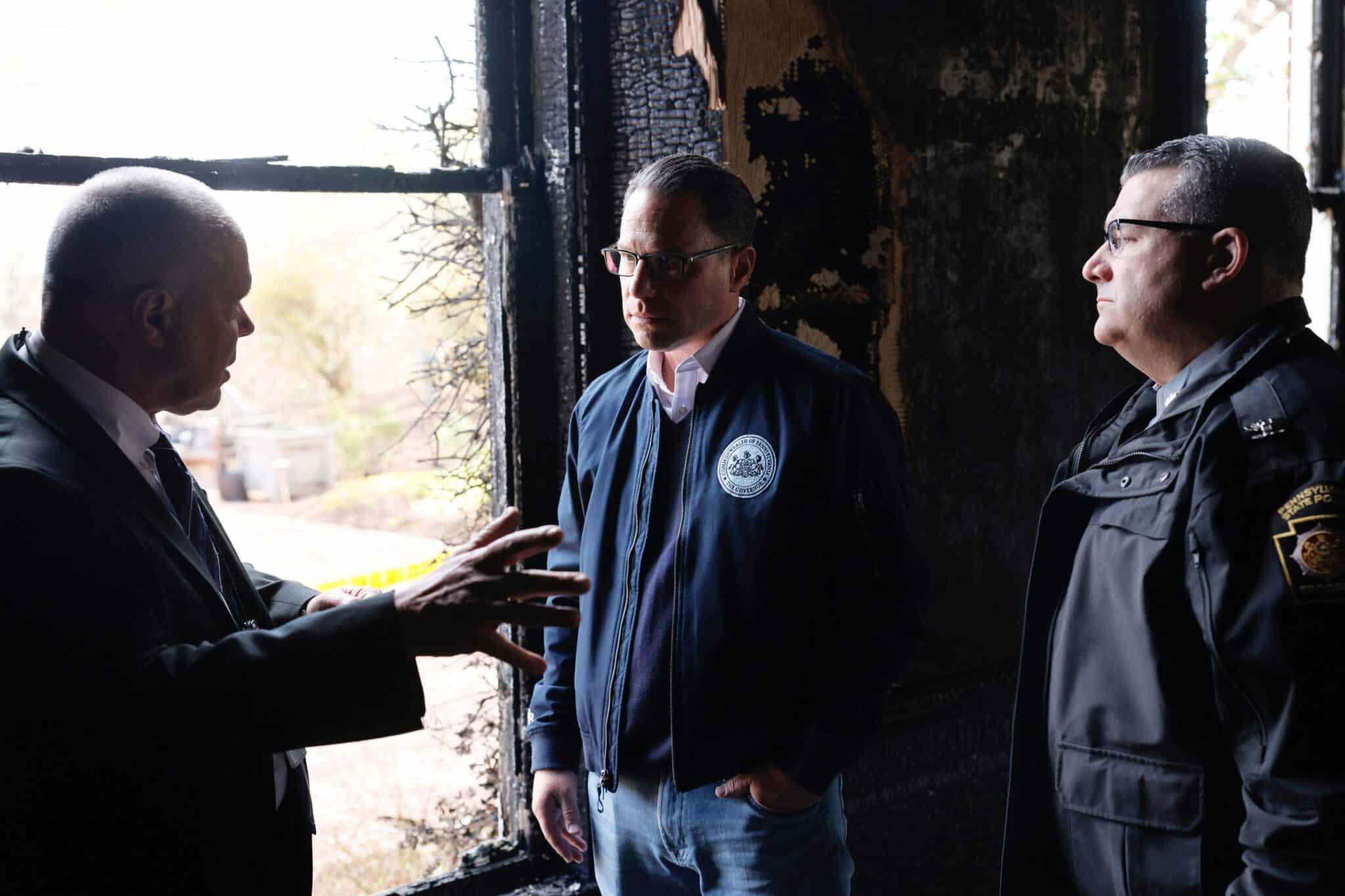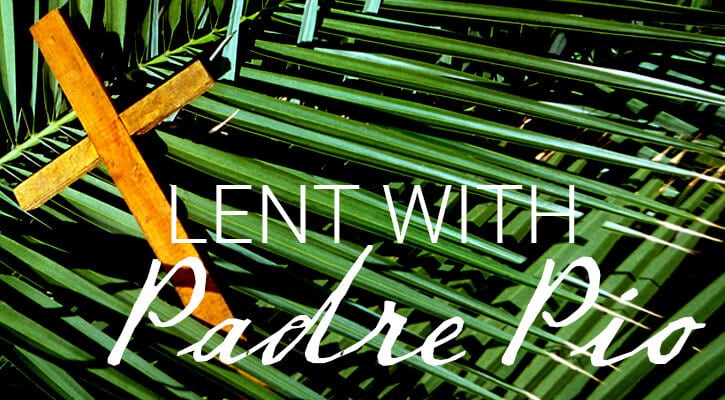Parish restructuring has become a reality for many US dioceses. While initially painful, the process can ultimately lead to healing and renewal.
When Alicia Nava Attended Mass during her more than 20 years as a parishioner at St. Mary in Davenport, Iowa, she usually sat near the large painting of the assumption of Mary that hung behind the altar.
But last July, the parish merged with St. Anthony Catholic Church. Nava, along with the Latino community that belonged to St. Mary, moved about a mile to a new parish. Her 154-year-old former church was sold to a nonprofit, but Nava still hoped the painting she loves would find a place in her new church.
This wasn’t the first move for Nava, who had to leave a different parish in 1999 to join St. Mary. About 150 of the community’s families are again putting down roots as best they can during the COVID-19 pandemic, but Nava wonders, “Is this going to be it, or do we have to merge again?”
In dioceses across the country, Catholics like Nava are grappling with feelings of confusion, anger, and sadness as their parishes are restructured. Whether through a merger or a decision to partner with one or more parishes, restructuring impacts parish life, identity, and sometimes beloved church property.
Decades after the first waves of US parish mergers, dioceses have improved the process of consolidating parishes and have sought to make it a means of spiritual renewal to meet the needs of the Church today. For some Catholics, the years following the restructuring continue to be painful, but with time, others have experienced healing and growth.
Parish restructuring reflects the reality of fewer priests. In 2019, the US Church had just under 36,000 priests, a decline of almost 40 percent from 1970, according to the Center for Applied Research in the Apostolate (CARA) at Georgetown University. During the same period, the number of US parishes declined by about seven percent, according to CARA.
Restructuring may be necessary because a parish no longer serves large immigrant congregations of another era. Or parishes may find themselves with dwindling membership and resources, especially during the COVID-19 pandemic.
The Pain of Closing Churches
Before St. Thecla Parish merged with two other parishes on Chicago’s northwest side to form a new parish, St. Elizabeth of the Trinity, in July 2020, it had little debt and an independent school. But Mass attendance was down and there were few ministries, according to longtime parishioners Shannon and Jerry Nelson.
With the merger, the three nearly 100-year-old parishes located within a three-mile radius were canonically suppressed, which means they went out of existence. The church in the middle of the three, St. Tarcissus, was chosen as the new parish’s site and the other two sites, St. Thecla and St. Cornelius, were closed.
No one at St. Thecla expected that their church would close and possibly be sold in the merger, or that many parishioners would decide not to be part of the new parish, Shannon Nelson says. Eight months after the merger, only about 10 percent were actively participating, taking into account COVID-19 Mass attendance restrictions. Among those staying away are her brother and sister-in-law.
“We weren’t just losing a building we’d come to know,” says Shannon. “We were going to be losing all those relationships because if they’d all said, ‘OK, fine, we’ll go to the new building,’ we still would have had St. Thecla in spirit and in people,” she says. “For the great majority, they will not be part of St. Elizabeth of the Trinity because they are so angry with the decision.”
St. Cornelius parishioners didn’t react as strongly in part because they had merged their school with that of St. Tarcissus and two other parishes five years earlier, says Father Michael Grisolano, pastor of Elizabeth of the Trinity and previous St. Tarcissus pastor. That will be that parish’s only school.
Parish mergers, which involve both civil and canon law processes, consist of two or more parishes joining together to create a single legal and canonical entity. Most often, one or more of the parishes are suppressed, allowing for consolidation into an existing parish or into a newly created one.
The three parishes that became St. Elizabeth of the Trinity were grouped as part of the Chicago Archdiocese’s Renew My Church plan and asked to discern how they would live out Christ’s mission and ministry in their area, whether or not that involved restructuring.
Following the discernment process, the Chicago Archdiocese announced the merger and selection of the St. Tarcissus site in November 2019.
Based on the archdiocese’s metrics, it was clear that none of the parishes was strong enough to stand alone. Combining them into one made sense to everyone, though it wasn’t clear which site would be best, says Father Grisolano. The St. Tarcissus site was chosen for its size, central location, and proximity to the school.

The Chicago Archdiocese has formed 98 groupings of its 344 parishes. At the end of 2020, 108 archdiocesan parishes had formed 45 parishes, 33 churches will no longer be used on a regular basis for Mass, and 17 churches have formally closed, said Bishop Robert Casey, the Chicago Archdiocese’s vicar general.
Jerry Nelson remembered his initial feelings over the St. Thecla closure. “You start to think about the history that you’ve had,” he says. “We got married there, our kids were baptized, and then that sadness of your last child can’t finish [eighth grade at St. Thecla School]. It’s not just our child, but it’s every child beyond that too.”
COVID-19 has prevented members of the new parish from gathering to form relationships and parish ministries, including the new parish council, Shannon says. Communication during the pandemic has been complicated by the difficulty of reaching older parishioners who don’t use computers. It’s also been challenging for incoming parishioners to integrate into existing ministries.
“It feels like I’m joining St. Tarcissus, and I’m trying to follow along with what they do in a sense,” Jerry says. “There’s that overwhelming feeling of this idea that something’s already going on. We’re not creating anything new.”
One Parish with Two Worship Sites
Ten years ago, when a new parish, Good Shepherd, was formed from two Wayland, Massachusetts, parishes, “there was a lot of resistance and people being territorial,” says parishioner Sue Muldoon, who is also the parish’s religious education and family ministries director. “Sometimes it was about a traditional connection and feel. Sometimes it was about even convenience of what end of town and how much further they needed to go to come to programs. Sometimes it was just, ‘This is where we grew up.'”
The former parishes, St. Zepherin and St. Ann, were canonically suppressed in the merger, but the new parish continues to use both church sites, which are just over two miles apart.
Maintaining two sites is sometimes challenging for Father David O’Leary, pastor, who has no associates but hopes to bring in a priest to help on weekends.
Parish leaders also worked to balance scheduling liturgies and programs between the sites, Muldoon says. “People just felt like it was a huge ask to have to go up the street or have to cross over ” to the other parish, she says, adding that gradually, “People move on, for the most part people really do, a lot.”
In 2020, Good Shepherd made significant improvements to both of its churches‚ evidence it plans to expand, not retreat, Father O’Leary says. “People recognize it’s one parish with two worship sites, so what we have is what we’re keeping.”
After a decade of working to unify the parish despite cultural, liturgical, geographic, and socioeconomic differences, new growth is seen in relationships parishioners have formed with families who had belonged to the other parish, Muldoon says.
Encouraging relationships between members of different cultural backgrounds is another challenge of restructuring. Nava and the St. Mary’s community in Davenport brought to St. Anthony their mostly Mexican culture and Spanish language. The parish has added a Sunday Mass in Spanish, but at first, the new members weren’t sure if they’d be welcomed.
“There was a lot going on because you don’t know what’s going to happen to your community, how the other people from the other parish where you’re going will react,” Nava says. “We have our own culture, and it’s not easy to come to another parish and try to do what you’ve been doing for many, many years.”
To unite the groups, St. Anthony Pastor Father Rudolph Juarez is facilitating communication between them. Young people from St. Mary are bringing energy to the merged parish, and he says he’d also like to see other parishioners who are engaged in their faith and the parish stepping up to serve. “Without laypeople who have skin in the game, this would be very difficult.”
Parish Collaboratives
In 2015, Brian Hanson was concerned when he learned that his parish, St. John the Evangelist in Wellesley, Massachusetts, would begin partnering with the nearby parish of St. Paul to share a pastor, pastoral team, and council, as well as finance, administrative, and facilities personnel. He wondered, “Is everything OK? Why are we doing this? Is our parish in trouble, and we just weren’t as aware of it?”
With the many mergers that took place in the Boston Archdiocese in previous decades, Hanson had seen parishes struggle and close, but he didn’t expect the parish he and his family have belonged to for 10 years to be affected.
St. John and St. Paul were forming what the Boston Archdiocese calls a “collaborative” of two or more parishes that maintain distinct identities, finances, and property but share a pastor or priests and in some cases staff, resources, and planning. Other dioceses use the term “cluster” to describe parishes sharing resources. Collaboratives that allow parishes to keep their identity have become the dominant model of restructuring in the Boston Archdiocese, and some choose to merge after they have partnered for some time, says Father Paul Soper, archdiocesan secretary for evangelization and discipleship.

To help members of the two parishes focus on what they could do together, the collaborative’s pastor, Father James Laughlin, brought in facilitators to lead forums. He also emphasized parishioners’ common faith in Christ and their desire to celebrate the Eucharist and serve those in need.
“You can’t start with ‘You just have to unite,'” Father Laughlin says. “People need to be able to go through a process of grieving because they are giving up things exactly the way that they were, and people feel passionately about their parish communities.”
Hanson’s concerns have been resolved as he’s seen the St. John-St. Paul Catholic Collaborative forming something he believes is greater than the sum of its parts.
“All the talented people in each parish and their treasures that they bring, their strengths, and best practices instead of just experiencing what your one parish has to offer in each of those categories, which can be great or . . . maybe not as strong‚Äînow you have a chance to really get the best of two parishes,” he says.
An example of the new synergy is the Sunday evening youth Mass, which before the COVID-19 pandemic was bringing together parishioners of different ages from both parishes, Hanson said. The Mass has been suspended during the pandemic.
“My guess is one of the parishes would not have been able to single-handedly support [the youth Mass], but together there’s a strong demand for it when you bring an offering like that to two parishes instead of one,” he says.
Collaborative members also serve the community together through the conference of the Society of St. Vincent de Paul that they run, Father Laughlin says.
In Chicago, St. Elizabeth of the Trinity’s food pantry, which opened after the merger at one of its campuses, also gives parishioners an opportunity to serve together. But they need to realize that more must be done to unite the parish and ensure its future, Shannon Nelson says.
The Work of Rebuilding and Healing
“What we really have to understand is there are actions we need to take right now in order to make sure that there are still viable infrastructures in place for us to practice our faith moving forward,” Shannon says. “That is something that really needs to be digested by folks. Like it or not, what [the merger] is intended to do is to provide a vibrant community for us to continue to practice and grow in Catholic faith and provide a structure that ideally is going to be a strong foundation for the future.”
Grieving changes brought about by restructuring and uniting to build something new requires time, Father Laughlin says.
“I think [it requires] being gentle and pastoral and also taking the time necessary to work through those things,” he says. “Mergers are not accomplished overnight. Coming together as a collaborative does not happen overnight. It takes years of careful listening and pastoral care.”
It will take more time for Nava to fully adjust to St. Anthony, but she was glad to learn that the Assumption painting from her old church would be brought to her new parish.
“I do feel like I’m part of St. Anthony’s, but it’s not complete because I don’t know a lot of people yet,” she says. “I’m getting used to new things. They do things differently, so we have to kind of see how we’re going to work together. They are always there asking if we need anything, so they’ve been good.”
Pandemic Presents Challenges and Opportunities
The COVID-19 Pandemic has complicated merging parishes’ efforts to unite, but it’s also motivated other parishes to merge in order to make the most of their resources.
Following the July 2020 merger of three Chicago parishes to form St. Elizabeth of the Trinity, Father Michael Grisolano emailed parishioners to find out if they planned to attend the new parish. COVID-19 restrictions have affected Mass attendance, so it hasn’t been a good indicator of interest.
Some of the parishioners from St. Mary in Davenport, Iowa, haven’t started coming to St. Anthony since the two parishes merged last July, says parishioner Alicia Nava. Those who are attending the parish have also had more challenges in getting to know each other.
“We have been having Zoom meetings, but it’s not the same thing to talk one-on-one and to get to know people,” she says. St. Anthony Pastor Father Rudolph Juarez has called parishioners. But until COVID-19 recedes, he has few options other than reaching out to them virtually.
Along with making it difficult to stay in contact with parishioners, the pandemic has stressed parishes financially. Some in the Boston Archdiocese that have a history of working together are deciding to merge in part so they can be more secure financially, says Father Paul Soper, the archdiocese’s secretary for evangelization and discipleship.
Before merging, the parishes were known as collaboratives, which the Boston Archdiocese defines as two or more parishes that maintain distinct identities, finances, and property but share a pastor or priests and in some cases staff, resources, and planning. Since July 2019, 25 collaboratives requested to merge and form new canonical parishes that have the same identity, finances, and property, Father Soper says.
“Part of it has been driven by the desire to make the parishes more secure during the difficult financial times brought on by the pandemic,” he says, “and part of it is just once you get a certain amount of momentum going with these parishes, looking at this and saying, ‘Well, why wouldn’t that make sense for us?'”









1 thought on “A New Approach to Parish Mergers”
I’m curious about the logistics of parish mergers, mainly in an identity sense?
What are ways to enact a smooth transition? How should the names of the parishes be combine or should a new name be created? Additionally, should a new icon/symbol/motto of the merger be created?
Also, are there diocese guidelines available for some of these questions?
Thank you.